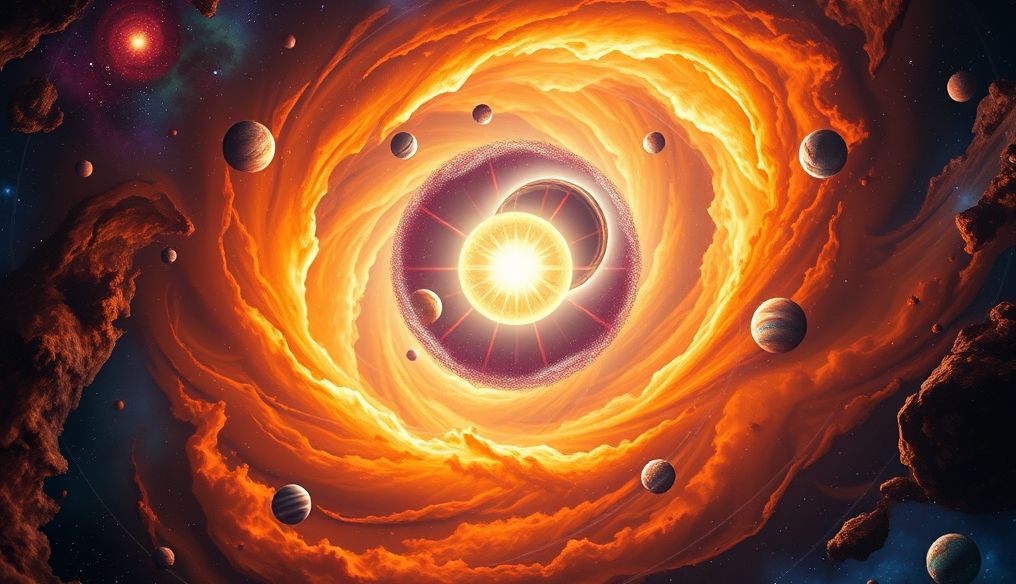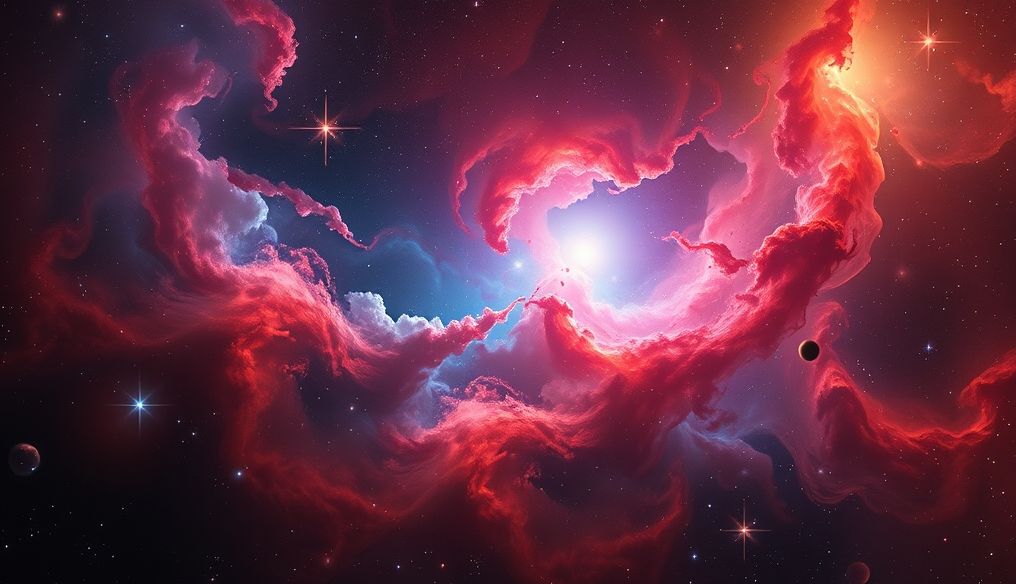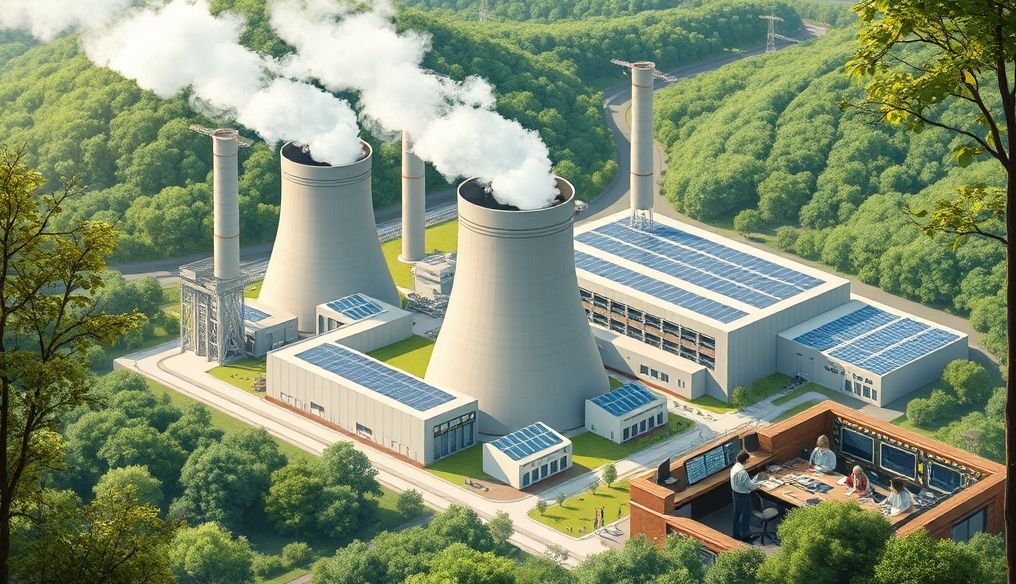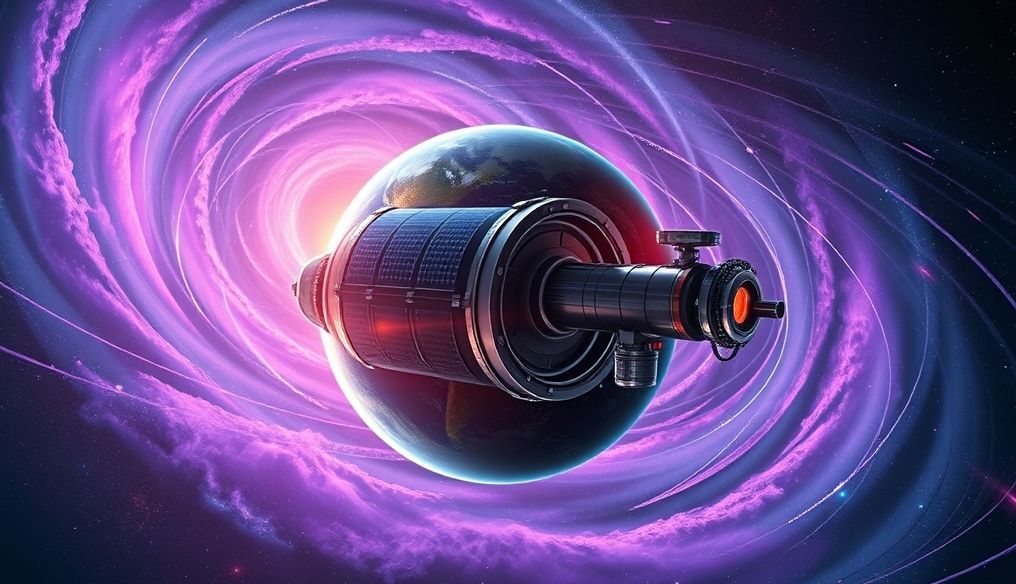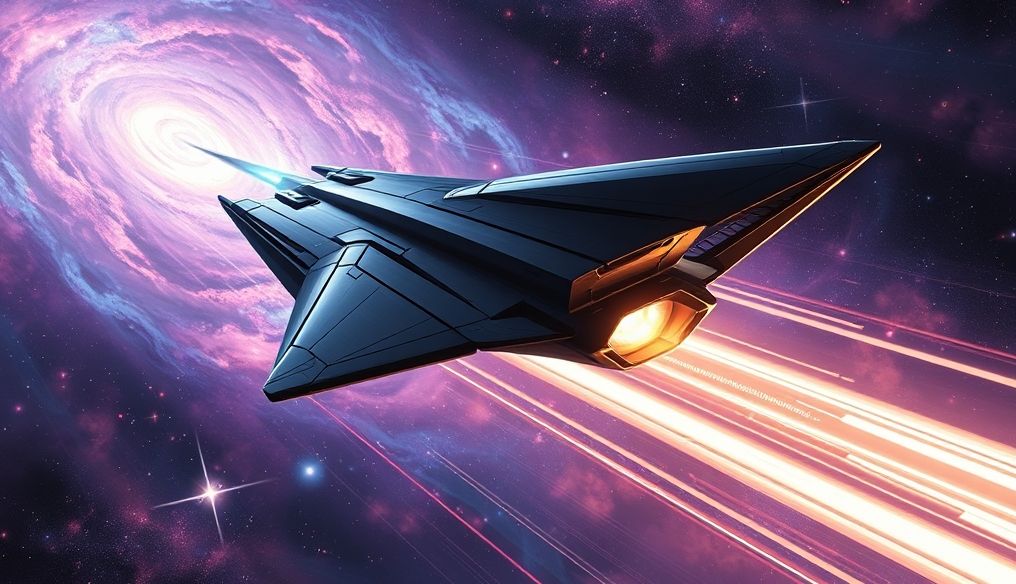Introduction: A Journey to the Heart of Cosmic Genesis
The formation of planets and stars has long fascinated humanity. How does a vast gas cloud transform into a glowing star and planets orbiting it? This fascinating journey requires a deep understanding of astrophysics, hydrodynamics, and careful observation of various celestial bodies.
Chapter 1: Giant Molecular Clouds - The Cradle of Stars
The story of star and planet formation begins within Giant Molecular Clouds (GMCs), vast and cold regions in space primarily composed of molecular hydrogen gas and other molecules like carbon monoxide. These clouds are characterized by relatively high density and extreme cold, making them an ideal environment for gravitational collapse and the beginning of star formation.
Characteristics of Giant Molecular Clouds:
- Size: Extend for tens or hundreds of light-years.
- Mass: Contain thousands or millions of solar masses.
- Temperature: Ranges between 10 and 20 Kelvin (-263 to -253 degrees Celsius).
- Density: Much higher than the average density of interstellar space.
Giant Molecular Clouds are affected by various factors, such as shock waves from supernova explosions, which can compress the clouds and lead to their collapse. Magnetic fields also play a significant role in organizing the movement of gas within the clouds.
Chapter 2: Gravitational Collapse and the Formation of the Protoplanetary Disk
When the force of gravity within a specific region of the Giant Molecular Cloud exceeds the forces of pressure and heat, the region begins to collapse under its own gravity. This collapse leads to an increase in density and a rise in temperature in the center of the region.
Stages of Gravitational Collapse:
- Fragmentation: The collapsing cloud divides into smaller, denser parts.
- Formation of the Protostellar Core: A Protostar forms in the center of each part of the collapsing cloud.
- Formation of the Protoplanetary Disk: A Protoplanetary Disk forms around the Protostar due to the cloud's rotation.
The Protoplanetary Disk is a flat disk of gas and dust orbiting the nascent star. This disk is where planets will later form.
Chapter 3: The Birth of Stars - Nuclear Ignition
As the Protostar continues to gain mass from the surrounding disk, its temperature and density increase significantly. When the temperature in the center of the core reaches about 10 million Kelvin, nuclear fusion reactions begin, where hydrogen atoms fuse to form helium atoms, and vast amounts of energy are released. This energy stops the gravitational collapse and stabilizes the star, making it a true star.
Types of Stars:
- Small Stars: Like the Sun, burn hydrogen slowly and live for a long time.
- Large Stars: Burn hydrogen quickly and live for a shorter time, ending their lives with supernova explosions.
Newborn stars also emit powerful streams of gas called Bipolar Outflows, which help dissipate the remaining gas and dust around the star.
Chapter 4: Planet Formation - From Dust to Rocky and Gas Giants
Planets form within the Protoplanetary Disk through a process called Accretion. This process begins with the accumulation of small dust grains due to electrostatic gravitational forces, forming larger bodies called Planetesimals.
Stages of Planet Formation:
- Dust Accumulation: Small dust grains accumulate to form larger bodies.
- Formation of Planetesimals: Planetesimals accumulate to form larger bodies.
- Formation of Protoplanets: Planetesimals accumulate to form Protoplanets.
- Formation of Planets: Protoplanets accumulate to form complete planets.
Types of Planets:
- Rocky Planets: Like Earth and Mars, primarily composed of rocks and minerals.
- Gas Giant Planets: Like Jupiter and Saturn, primarily composed of gases such as hydrogen and helium.
- Ice Giant Planets: Like Uranus and Neptune, primarily composed of ice and gases.
The type of planet that forms depends on the distance from the star, where temperatures are higher near the star, preventing ice formation and leading to the formation of rocky planets.
Chapter 5: Planetary Migration - A Planet's Journey Around Stars
After the formation of planets, they can move around the star due to gravitational interactions with the Protoplanetary Disk or with other planets. This process is called Planetary Migration.
Types of Planetary Migration:
- Inward Migration: Planets move towards the star.
- Outward Migration: Planets move away from the star.
Planetary migration can change the order of planets in the solar system and can cause some planets to be ejected from the system.
Chapter 6: Moons, Asteroids, and Comets - Remnants of Formation
In addition to planets, moons, asteroids, and comets also form in the Protoplanetary Disk. Moons orbit planets, while asteroids and comets are small bodies made of rock and ice.
Origin of Moons:
- Co-formation: Moons form at the same time as planets.
- Capture: Planets capture moons that were orbiting the star or were free bodies in space.
- Collision: Moons form as a result of the collision of two planets.
Asteroids and comets are remnants of the planet formation process and can provide valuable information about the conditions that prevailed in the early solar system.
Chapter 7: Other Planetary Systems - A Diversity of Worlds
Scientists have discovered thousands of planets orbiting other stars (Exoplanets). These planets show great diversity in size, composition, and orbit, suggesting that the planet formation process can lead to very different results.
Types of Exoplanets:
- Hot Jupiters: Gas giant planets orbiting very close to their stars.
- Super-Earths: Rocky planets larger than Earth.
- Mini-Neptunes: Planets smaller than Neptune and larger than Earth.
Studying exoplanets helps scientists better understand the planet formation process and determine if there are other habitable planets in the universe.
Chapter 8: Evidence from Observations - Telescopes and Observatories
The study of planet and star formation relies on astronomical observations using various telescopes and observatories. These operations provide information about the composition, temperature, and density of Giant Molecular Clouds, Protoplanetary Disks, and Exoplanets.
Examples of Telescopes and Observatories:
- Hubble Space Telescope: Provides high-resolution images of Giant Molecular Clouds and Protoplanetary Disks.
- James Webb Space Telescope: Can observe infrared light emitted from exoplanets, allowing for the study of their chemical composition.
- Atacama Large Millimeter/submillimeter Array (ALMA): Can observe millimeter waves emitted from Protoplanetary Disks, providing information about the distribution of gas and dust.
By analyzing the data collected from these telescopes and observatories, scientists can build detailed models of the planet and star formation process.
Conclusion: A Look into the Future
There is still much to learn about the planet and star formation process. With the development of astronomical technology, we will be able to observe the most distant celestial bodies and study exoplanets in greater detail. This will help us better understand the origin of our solar system and our place in the universe.
